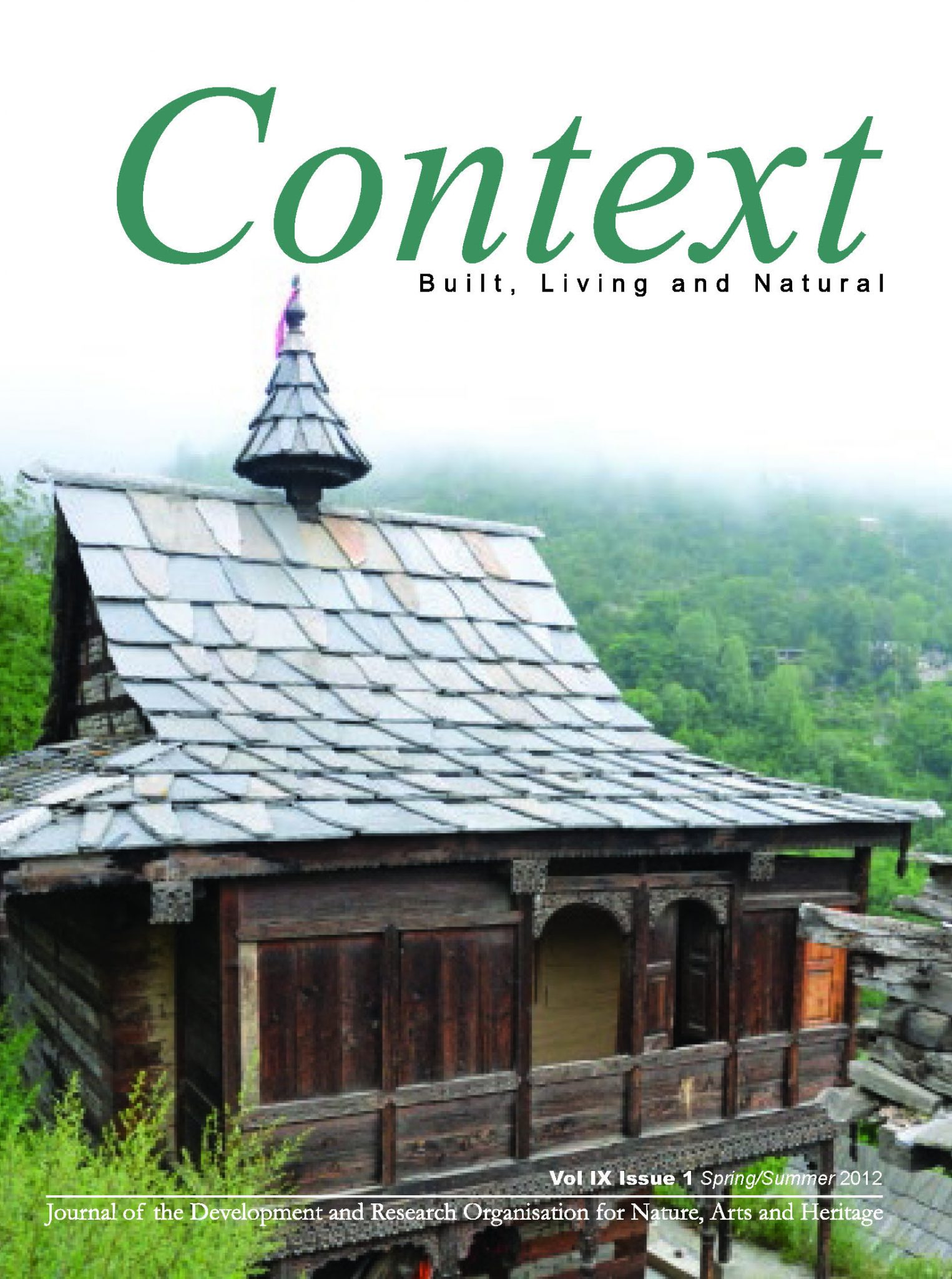Volume IX Issue I
About the Volume
History, heritage and traditional knowledge systems not only act as resource banks for the next generation but additionally provide clues for evolving sustainable methodologies, customised as per the place and its people. The introductory article by Jay Thakkar covers the documentation of indigenous construction systems of Himachal Pradesh that have served as an appropriate technology for resisting earthquakes for centuries and continue to provide lessons for designs in the future.
Michel Danino relates the Ghaggar-Hakra River with the lost Sarasvati River recording a lost civilisation along with a message that we need to learn from the mistakes of past and urgently address the current overexploitation of our natural resources.
Nitin Sinha puts across the significance of alternative dispute resolution methods for heritage management, making the point that the combined effort of the legal and conservation mechanisms is essential in order to conserve our heritage. The case of Amritsar resonates the fact that there is a need to reassess what we undertake in the name of redevelopment of historic areas and that any future initiatives must be based on a holistic understanding of the social and built fabric of a place with participation of appropriate stakeholders and experts.
Increasing urbanisation and its impact on surrounding rural fabric is evident in most Indian cities, as exemplified in the case of a village on the periphery of Chandigarh, where urban culture is causing dilution of rural traditional frameworks. Another concern brought upon by this ‘urban culture’ is highlighted by Tamanna Sharma and Saurav Bardhan in the form of the problem of waste management in urban areas with recommendations for community participation and decentralisation as the key elements that can bring about positive, responsible and sustainable change.
Ananya Bhattacharya and Sudha Shrestha present case studies where community led initiatives have resulted in conservation of tangible and intangible heritage through training and capacity building or through revival of traditional socio-cultural organisations. Through the heritage album section, we revisit the multi-dimensional significance of the Malabar gardens of Kerala and the traditional water harvesting systems of Rajasthan. The book reviews cover interesting new publications on symbolism in Hindu mythology and traditional postal system in India. As a concluding review, Mukta Naik provides an assessment of the ambitious JNNURM Programme of the Ministry of Urban Development which draws to a close after completing its seven year tenure in 2012.
-The Editorial Team
Contents
About the Volume
Compiling records
Details of Resistance: Indigenous construction systems in Himachal Pradesh
Bharat Dave, Jay Thakkar and Mansi Shah
Methods and approaches
Down the Sarasvati
Michel Danino
Alternative Dispute Resolution in Heritage Management
Nitin Sinha
Redevelopment and Conservation: The case of Amritsar
Balvinder Singh
Impact of Urbanisation on Villages of Chandigarh
Sunanda Kapoor
Decentralised Solid Waste Management
Tamanna Sharma and Saurav Bardhan
Sustainable solutions
Safeguarding Intangible Cultural Heritage as Livelihood: Case study of Purulia Chau
Ananya Bhattacharya
Participatory Approach for Conservation: Indrayani Jatra of Kirtipur, Nepal
Sudha Shrestha
Heritage album
Malabar Gardens
Renée Ridgway
The Ancient Ingenuity of Water Harvesting Systems
Anupam Mishra
Book reviews
De-coding the Symbolism in Hindu Mythology: Series of books by Devdutt Pattanaik
Neeta Das
Pigeons to Post : India Post and History of Indian Postal Services by Steve Borgia
Rima Hooja
Review
Lessons from JNNURM
Mukta Naik
Events and conferences

